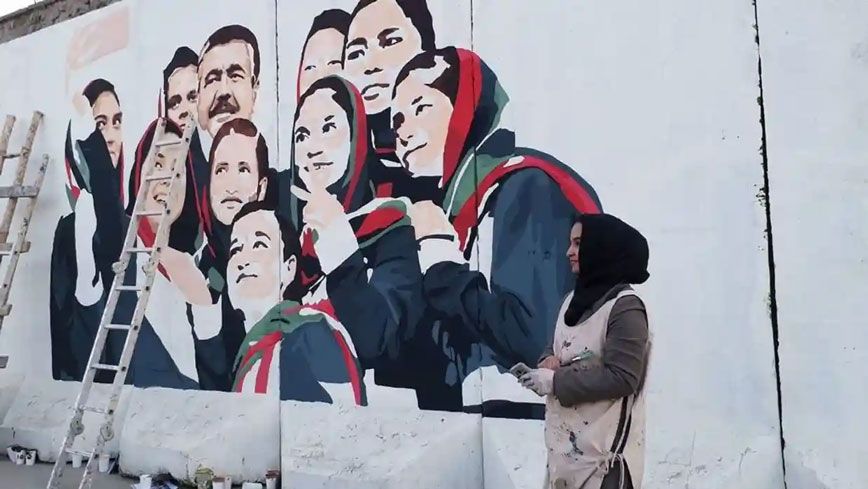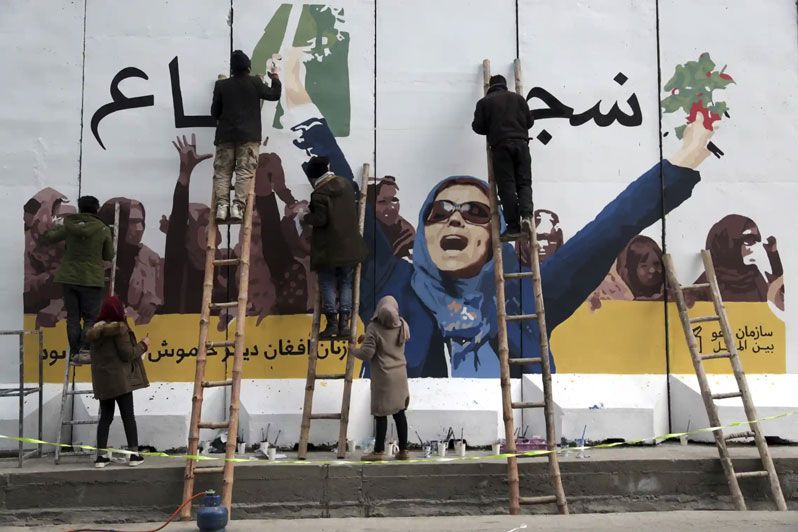For over a decade, a country at war has faced many challenges and restrictions. This has been a war-torn country since the US declared a war on terror, thus putting the citizens, namely artists and women, in a more delicate position.
With the recent return of US armed forces from Afghanistan, the country has been left in ruins. The Taliban have taken over, providing a critical position for artists and women in the country. Many Afghan artists have been hiding and are on the run from the government of the Taliban which is highly restrictive in its nature, in the ploy to follow “religious protocols.” This is because they determine the form of the display as forbidden—while it may not be the case with religion. The artists fear the killing and persecution seen in their previous rule, as such was done in the previous cases that highlighted cultural assets.
Along with artists, women too are at bay being deprived of their natural rights to study and freedom of opinion as the Taliban government keeps strict and tight control over its people. There has been a devastating impact on girls as highlighted by Human Rights Watch. Since the rise of the Taliban, the government imposed rights-violating policies that created barriers to girls and women’s education, health and freedom of movement. Along with this, restrictions came upon association and expression.
As quoted by Halima Kazem Stojanovic, a member of SJSU’s Human Rights Institute in Afghanistan, “Afghan women and girls are facing both the collapse of their rights and dreams and risks to their basic survival.” Several organizations have called on governments around the world to protect such women and Afghan artists. One of these organizations is Artists at Risk.
The NGO has helped several artists from various countries find refuge in other places. They submitted a list of Afghans for protection on September 1st, before NATO and US troops withdrew from the war-torn country. However, nothing happened, and no protection was provided by governments of the world.
Azimi, a notable Afghan artist, provided her outtake on the evacuation flights that followed the withdrawal, highlighting how a number of artists made it; however, they had to leave behind years of efforts and work to revive Afghan art. Their murals have now been erased, one after the other. Amongst this was her mural of the Afghan women’s orchestra which was her first piece with ArtLords, that was whitewashed. The mural highlighted freedom for women and opportunities to take part in what they wanted, opening the conversation to feminism.

Shamsia Hassani is another Afghan artist focussing on graffiti work. She also works at the Kabul University and managed to escape from the oppressive rule of the Taliban. She stated that her heart was broken with the rise of the Taliban as the country that gave her identity with her art was taken away. Like many Afghan artists, she grew up in a refugee camp in Iran after a decade of war in the country and only returned to Kabul after the fall of the Taliban in 2001. “Art was evolving there. The number of artists and art lovers was gradually increasing. Of course, there were still many who opposed art, but it was available for everyone, and we had the freedom to be an artist,” she says. “We had planted a seed and were watching it grow.”

The current situation in Afghanistan evokes great fear while highlighting the oppression at hand. The United Nations Sustainable Goals seem to be undermined at hand as according to Quality Education, Reduced Inequalities and Gender Equality, women and artists are entitled to their rights at the hand of any government of the world. The religious statements are just a ploy to gain power and oppress the weak. Thus, the values and rights must be protected. We must call upon NGOs to help the artists and women in danger of death at the hands of the Taliban to be protected and be provided with a safe place to live. For this, the United Nations must take strict action along with the US leaving the country shattered.
To see what more can be done to support Afghan organizations to provide safety to the oppressed, click here.
